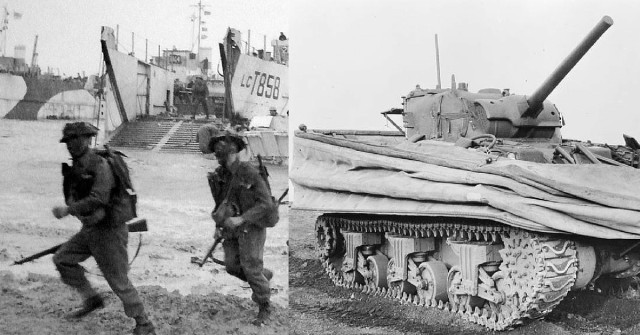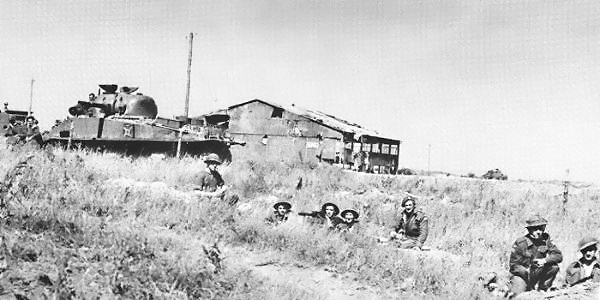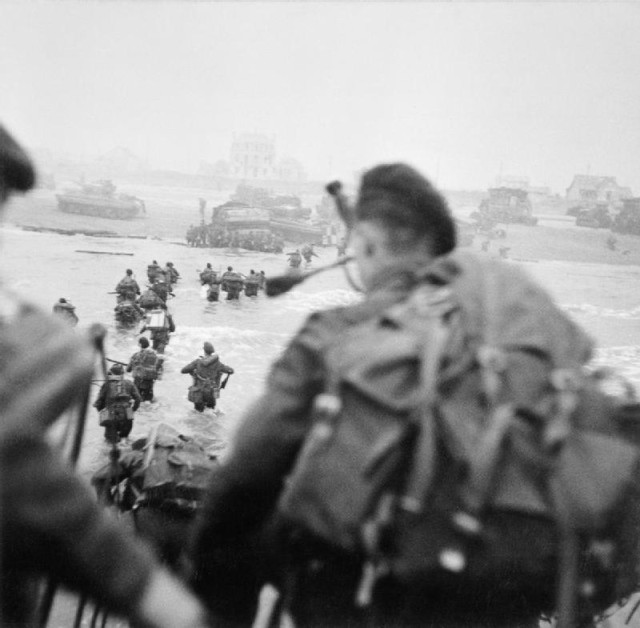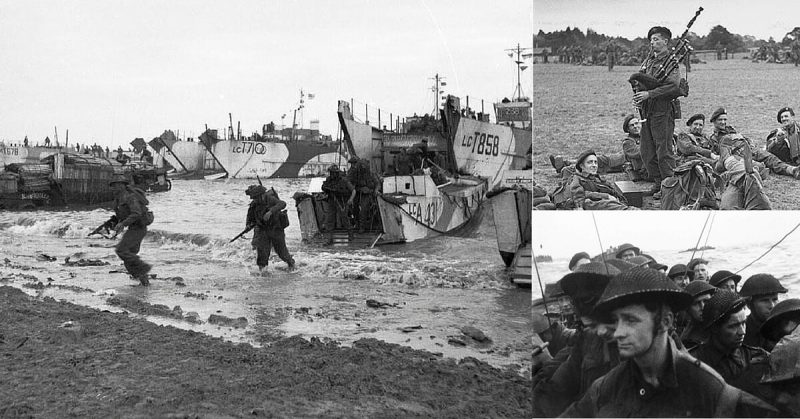Today, the Normandy landings might be most associated with the iconic photos of Omaha Beach, but let us not forget that there were five sectors that needed to be secured to successfully invade Nazi-occupied France in 1944.
Operation Neptune (the code name for the invasion phase of Operation Overlord) included American, British, Canadian, French and other forces opposing the grip of the tyrant Adolf Hitler.
The five points of the invasion were split between the American and British forces; Utah Beach and Omaha Beach were stormed by a total of around 73,000 American soldiers, and their mission included the fight for the high ground at the infamous Pointe du Hoc, the center of Omaha beach. The three beaches codenamed Sword, Gold, and Juno were taken on by British and Canadian Divisions – we’ll take a closer look at these three beaches today.
An interesting fact is that it was originally planned to name the British-Canadian beaches after fishes ― Goldfish, Swordfish, and Jellyfish, which would be shortened to Gold, Sword, and Jelly. Winston Churchill found the name Jelly inappropriate and disrespectful towards the men who would undoubtedly die there; on his insistence, it was decided that the name should be changed to Juno, the name of an important Goddess of ancient Rome.
Gold
The landings on Gold Beach were scheduled for 7:25 on June 6, 1944, almost an hour after the Americans had landed on Utah and Omaha. The time difference was set due to the differences in the tide between the British and the American beaches. High winds also made it difficult for the DD Tanks (Shermans adjusted for amphibious warfare) to land and deliver proper support, as 8 of the tanks were lost during transport. Sea conditions caused some of the tanks to become stranded in the shallows, where they suffered heavy casualties from the German anti-tank crews.
Luckily, many casualties were avoided due to the support fire by the cruisers, HMS Ajax, and HMS Argonaut, which neutralized three out of four gun emplacements on Longues-Sur-Mere, overlooking the Omaha and Gold beaches. The fourth emplacement continued to operate until 19:00 that day. Aerial attacks weren’t so lucky – they failed to hit the strategically important Le Hamel strongpoint, which had its embrasure facing east to provide fire along the beach and had a thick concrete wall on the seaward side.

Meanwhile, the infantry had already landed and was fighting its way through the obstacles laid on the beach. Company Seargent Major Stanley Hollis led a charge on two pillboxes on one of the high points. For this and other actions at Gold Beach, he was awarded the Victoria Cross ― the only one given on D-Day. Soon, visual contact was established with the Canadians at Juno, and the beach was more or less conquered. The Allied casualties at Gold numbered approximately 1,000 soldiers, of which 350 were killed and the rest wounded.
Juno

Similar to the situation at Gold Beach, the landing at Juno was delayed due to weather conditions, so the infantry landed on the shores way ahead of the armor. This led to heavy casualties in the initial minutes of the landing. Also, most of the bombardments had missed the German strongpoints, so the defense forces used most of their capacity during the attack.
Major German strongpoints with 75 mm guns machine-gun nests, concrete fortifications, barbed wire and mines were located at Courseulles-Sur-Mer, St Aubin-sur-Mer, and Bernières-sur-Mer. Once the beach had been captured, with heavy fighting, these villages had to be taken house by house as they were defended by German soldiers who refused to give up easily.
Elements of the 9th Canadian Infantry Brigade made a significant breakthrough that day, almost arriving at the vicinity of the small airport at the village of Capriquet, from the Germans launched their aerial assaults. The Canadians were forced to dig in for the night as their tanks were running low on ammunition. The total casualties at Juno Beach on June 6 were 961 men, of whom 340 were killed.
Sword

On Sword Beach, 21 out of 25 DD tanks managed to get ashore, thus providing excellent armored support to their infantry counterparts. Though the initial landings were achieved without heavy losses, the beach was heavily mined and peppered with obstacles, making the work of the beach clearing teams difficult and dangerous.
In the windy conditions, the tide came in more quickly than expected, so maneuvering the armor was difficult. The beach quickly became congested. The 1st Special Service Brigade embarking the shores of Sword Beach was accompanied by Private Bill Millin, the famous WWII bagpiper.
The Free French Forces under Commander Phillipe Kieffer arrived on their home soil together with the British. They were responsible for capturing a German strongpoint at the Riva Bella Casino in the village of Ouistreham, with the assistance of one of the DD tanks. Members of No. 4 Commando moved through Ouistreham to attack a German gun battery on the shore from the rear. A concrete observation and control tower at this emplacement had to be bypassed and was not captured until several days later.
The British troops advanced across the area, capturing several other strategic strongpoints and bunkers that served as field HQ’s for the Germans. They started marching towards the town of Caen. They were several kilometers away from the town when they were forced to withdraw, facing a German armored counterattack.
Since the British lacked armor support at this point, they had to retreat and regroup to hold off the fierce counterattack they now faced. The 21st Panzer Division mounted a counterattack between Sword and Juno and nearly succeeded in reaching the Channel.
These Panzers met stiff resistance from the British 3rd Division and were soon recalled to assist the troops located between Caen and Bayeux.
The Normandy landings and the combined assault by over 150,000 Allied troops represent the single biggest amphibious invasion in history. Across the five sectors, more than 10,000 allied soldiers were lost, with almost half of these confirmed dead. German casualties are harder to gauge; estimates vary from 4000 to 9000. Ultimately, the Allied victories at Normandy, on June 6th, 1944, paved the way for the defeat of Hitler’s regime in Western Europe.
